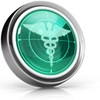Members of our labor, employment, and benefits team have been busy providing analysis on continued updates to state COVID-19 rules and standards. We know these resources are valuable to readers of Health Law Scan, and we preview two recent LawFlashes that may be of particular interest to those operating in California and New York below.
 Health Law Scan
Health Law Scan
Legal Insights and Perspectives for the Healthcare Industry
Members of our labor, employment & benefits and healthcare teams recently published a LawFlash discussing the Occupational Safety and Health Administration’s (OSHA’s) updated COVID-19 guidance for employers. The long-awaited COVID-19 Emergency Temporary Standard (ETS) is effective as of June 10, 2021, but only applies to employers in healthcare and healthcare support services settings. Employers covered by the ETS have 14 days (from the date that the ETS is published in the Federal Register) to comply with most provisions, and 30 days (also from the date of publication in the Federal Register) to comply with the provisions related to physical barriers, ventilation, and training.
Members of our labor and employment and employment counseling teams recently published a LawFlash discussing the US Equal Employment Opportunity Commission’s (EEOC’s) long-awaited update to its technical assistance guidance on COVID-19 and the Americans with Disabilities Act (ADA), the Rehabilitation Act, and other federal equal employment opportunity (EEO) laws.
Members of our labor and employment team have published resources highlighting updates to state mask guidance in California, Illinois, Massachusetts, New York, New Jersey, Oregon, and Washington in alignment with the Centers for Disease Control and Prevention’s (CDC’s) new guidance that allows fully vaccinated individuals to forgo masks and social distancing requirements in most indoor and outdoor locations.
Members of our labor and employment team recently published a LawFlash examining the Centers for Disease Control and Prevention’s (CDC’s) new guidance stating fully vaccinated individuals can safely forgo masks and social distancing requirements in most indoor locations. This policy change is due to new information showing reduced risk of COVID-19 infection in vaccinated individuals and reduced risk of transmission from fully vaccinated persons to unvaccinated persons.
Members of our labor and employment team recently published a LawFlash discussing and analyzing the New York Health and Essential Rights Act (the HERO Act), which was signed into law on May 5, 2021 by New York Governor Andrew Cuomo. The HERO Act requires the New York State Department of Labor and New York State Department of Health to create industry-specific airborne infectious disease standards that must be used by all employers doing business within the State of New York.
Members of our labor and employment team recently published a LawFlash discussing the US Department of Labor’s (DOL’s) April 14 issuance of three pieces of subregulatory guidance addressing the cybersecurity practices of retirement plan sponsors, vendors, and plan participants respectively. This resource, which includes our team’s analysis and observations, may be of particular interest to employers in the healthcare sector, who are all too familiar with how important it is to keep data secure.
Our immigration colleagues recently published a LawFlash on the July 29 decision by the US District Court for the Southern District of New York to grant a preliminary nationwide injunction to temporarily block the continued implementation of the public charge rule during a public health emergency such as the coronavirus (COVID-19) pandemic.
Modern Healthcare recently named Morgan Lewis as the largest healthcare law firm for the fifth year in a row. The annual “Largest Healthcare Law Firms” list highlights law firms that have dedicated practices and staff to meet the needs of healthcare and life sciences clients.
Our global employment and immigration team details a number of recent developments with important implications for the US healthcare industry.